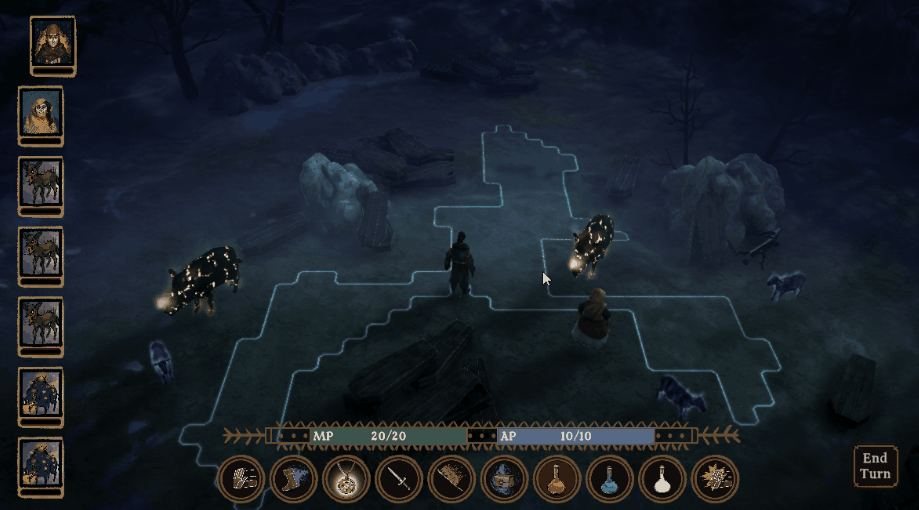The Long Night
Role: Director and Writer
Developer: Portaplay / Bird Island

A Condensed Horror RPG
You are Petar, a young torchbearer who guides travelers through the night. A Habsburg investigator has hired you to lead him to the nearby village of Malo Svjetlo, where strange and sinister events have been reported. En route, an unnatural fog envelopes you and malformed beasts attack.
You barely manage to reach the village, where the locals have built a great bonfire to keep the shadows at bay. With the investigator injured, and no one else willing to brave the dark, you must investigate this strange curse and attempt to solve its mysteries before the darkness corrupts everyone and consumes your light.
The Long Night is currently in development, with a completed demo.
My Role
_PNG.png)
On this project I was the primary creative lead. I:
-
Directed the game, including guiding the design, art, audio, and tech teams.
-
Mapped out and plotted the overall narrative.
-
Structured scenes and wrote all dialogue and additional text for quests, character bios, and items.
-
Worked with our design and tech team to develop and improve our combat systems, UI, and general workflow.
-
Worked across projects to improve studio efficiency and development practices.
Directing, Writing and Design
Unique Project Features
A Condensed RPG
Although the Long Night inherited tools from our studio's previous projects, it had the tall order of condensing many RPG elements into a relatively short play time.
We began by separating the core elements of gameplay into two main location types: The Village Hub and Outskirts. This segmented our social and combat gameplay, but having a dungeon phase was not quite enough.
To economize player choices, we centered battle around synergies that are greatly improved by your companions. Want to play a bloodletting masochist? Bring the soldier/healer with you. Want to bend the shadows to your will? The local mystic might be a good shout.
The player's own loadout improves their prowess as well, but by emphasizing companion abilities, we allowed for a quick, impactful decision that also helped build attachment to our NPCs.
Creating a sense of horror and dread was also key, especially given our camera perspective and combat requirements. While the player can become increasingly effective, they can never "win" combat, only stave off the inevitable. The ever-changing nature of your adversaries, as well as compounding injuries and negative traits, furthers this sense of dread.
On the narrative front, we were also focused on making the curse unknowable and refused to give easy answers about its motivation. It is seemingly ever-changing, and only multiple playthroughs will provide a hint at its true nature. Our experience in modular narrative structures and run-based games means we're able to craft a meaningfully replayable game where the story can evolve a little each time.






